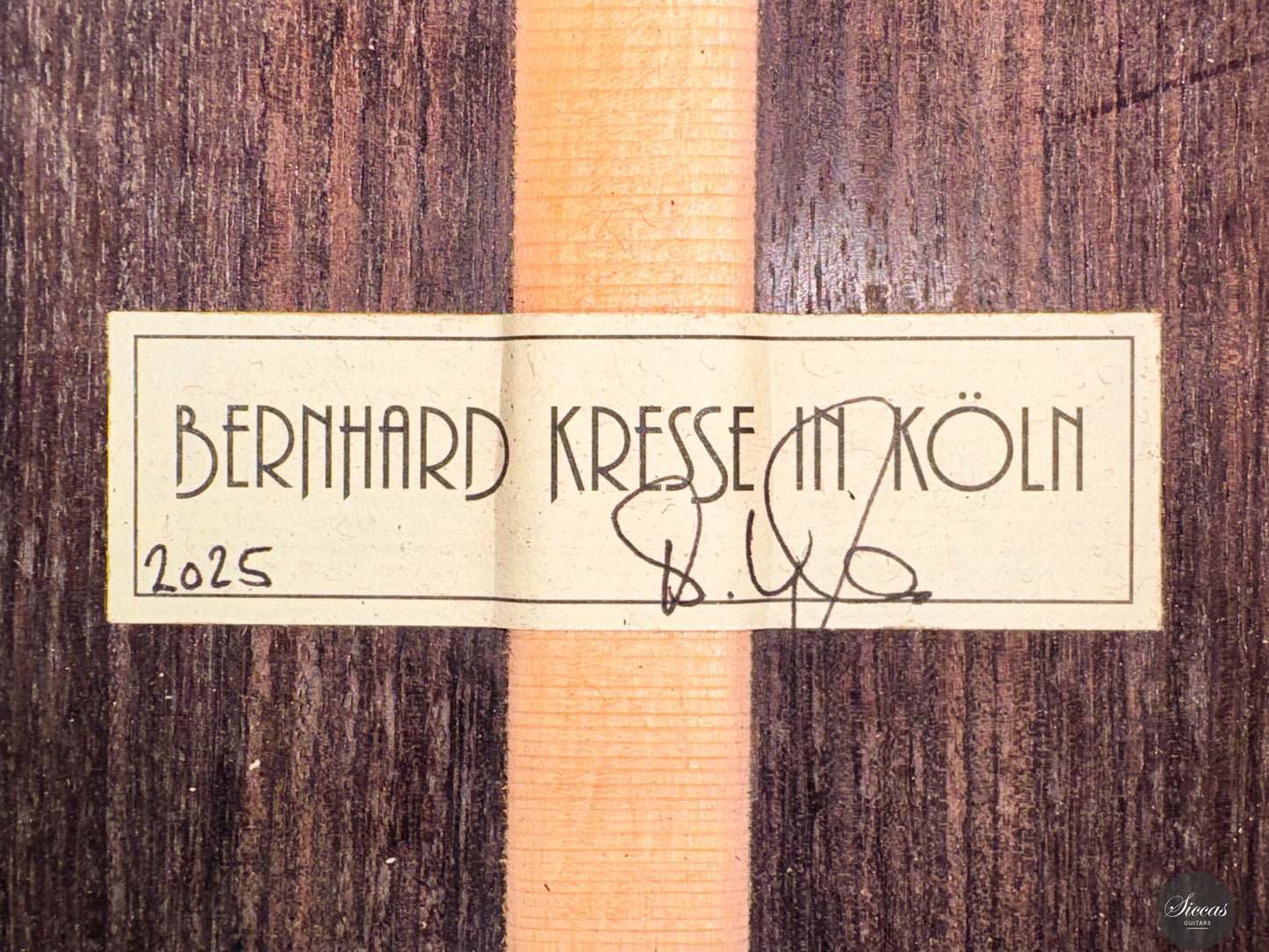Bernhard Kresse - 2025 - Panormo 1843 - 63 cm
Bernhard Kresse - 2025 - Panormo 1843 - 63 cm
Details
Details
Overview
Overview
Shipping important note
Shipping important note
Delivery times are typically reliable and most instruments arrive within the estimated timeframe.
Should any unexpected delay occur, our team will keep you informed and provide support at every step. For all shipping details and exceptions, please see our Shipping Policy.
Details about GPSR
Details about GPSR

























Video overview


More details about the guitar
About the luthier
Bernhard Kresse, based in Cologne, Germany, is internationally recognized for his expertise in building historically informed instruments as well as modern classical guitars. His deep knowledge of nineteenth-century Spanish and French traditions, combined with meticulous craftsmanship, has earned him a reputation as one of Europe’s leading luthiers for historically inspired guitars. He is especially admired for his faithful reconstructions of romantic-era instruments, which capture the authentic sound world of the early guitar repertoire while maintaining the structural reliability required by today’s performers.About the guitar
This guitar, completed in 2025, is Bernhard Kresse’s interpretation of a Louis Panormo instrument from 1843. It features a spruce soundboard and Indian rosewood back and sides, finished with French polish. With a shorter 630 mm scale length, a 47 mm nut, and a remarkably light weight of only 1190 grams, it offers the playability and tonal character typical of romantic-era guitars. The elegant design is completed with Alessi tuners and refined craftsmanship in every detail. The tonal profile reflects the intimate and lyrical qualities associated with early nineteenth-century guitars. The sound is soft, warm, and slightly nasal, with a pronounced midrange that evokes the original Panormo character. Its balance and clarity make it ideally suited for repertoire of the classical and romantic periods, offering both expressive delicacy and historical authenticity. Despite its historical model, the instrument is entirely new, reliable, and built to the highest modern standards of precision.Regular care extends the life of the instrument
Even with careful use, a classical guitar may gradually change in appearance or respond to unstable storage conditions. Have a close look at your guitar regularly and be attentif to changes. If your instrument is suffering from its environement, it will let you know.
Protect Your Guitar: Handle with Care
Be mindful when touching your instrument with greasy or unwashed hands: any skin contact is a small attack on the varnish. Of course, a guitar is made to be played, but taking a few precautions helps preserve its beauty: wash your hands before playing, wear long sleeves, and avoid unnecessary direct skin contact with the body of the instrument.
Pro tip: Avoid playing with a button-up shirt, heavy jewelry, or a belt, as these can scratch the guitar. Also, make sure your guitar case is free of any objects that could damage the instrument during storage.
String care
A good habit to adopt is wiping down your strings briefly after each playing session. This small action significantly extends their lifespan and helps maintain a consistent, comfortable feel under your fingers.
Most importantly, clean strings are essential for keeping your instrument in tune. Corrosion, sweat, and dust can affect the uniformity of the strings and interfere with accurate tuning across the entire fingerboard.
Pro tip: If you're having trouble getting your guitar in tune, it might be time to change the strings. A useful test is to compare the pitch of the 12th fret harmonic with the fretted note at the 12th fret; if there's an unusually large gap between them, your strings may have lost their integrity and should be replaced.
Keep Your Shellac Finish Shining!
Got a guitar with a shellac (French polish) finish? Here's a simple trick: Take a clean microfiber cloth and gently breathe on the surface to create a light mist. Then, softly rub to remove fingerprints, sweat, and grease. That’s usually all it takes to keep it looking great, no products needed!
Pro tip: Every few years, treat your guitar to a check-up with a luthier to keep it in top shape.
Storing Your Guitar: Climate Matters
Your guitar can safely stay outside its case, as long as the surrounding environment maintains 42–55% humidity and a temperature between 18–25°C.
Keep in mind that humidity levels can still fluctuate inside the case, especially during seasonal changes.
- Too much humidity may cause overtightened strings and a dull tone.
- Too little humidity can lead to a bulging top, string buzz, or even cracks.
Avoid placing your guitar near radiators, air conditioners, or windows with direct sunlight.
Pro tip: Always close your guitar case while playing. This helps preserve a stable microclimate inside the case, so your instrument is protected the moment you put it back in.

























































